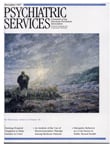Culture and Psychopathology: A Guide to Clinical Assessment
Changing demographics, increasing migrations, and shifting international relations are challenges to psychiatrists practicing in our multiethnic societies. Therefore, a book presenting an in-depth analysis of the diverse interactions between culture and psychopathology is of great importance. The main achievement of this book, which focuses on assessment of patients of varying cultural backgrounds, is its avoidance of ethnocentrism and biological determinism as well as its attitude toward transcultural assessment.
Most of the book's contributors are from the department of psychiatry of the University of Hawaii School of Medicine. Some of the 14 chapters discuss the cultural aspects of common psychiatric conditions such as depression, anxiety, psychosis, and personality disorders; others consider special themes such as pain, suicidal or violent behavior, and adolescent or geriatric psychopathology. Each chapter begins with case vignettes reflecting cultural issues and ends with suggested clinical guidelines.
Unlike many publications, this book does not limit itself to presenting epidemiological data for different cultural groups; it also tries to elucidate the reasons for the distinctions among groups. Of particular interest are examples of cultural factors affecting help-seeking behavior of various minorities in the U.S. Different views of the mind-body dichotomy in Western and non-Western cultures are well illustrated, and contributors correctly note those differences as a reason for the limited use of Western diagnostic criteria in other countries. They also mention that European clinicians can be surprised by certain beliefs and "bizarre" behaviors of non-Western patients while Asian patients can be shocked by the opinion of their Western psychiatrists, especially psychoanalysts.
The contributors correctly emphasize the significance of behavioral stereotypes reflecting relationships both inside and outside an ethnic group. Undoubtedly, in some cultures these stereotypes result in aggressive and suicidal behavior such as the Italian vendetta and Japanese seppuku.
At the same time, several conclusions of the book can be disputed. For instance, clinicians' preference to give, and patients' preference to get, a diagnosis of neurasthenia instead of depression is considered an example of the social stigma of depression existing in many cultures. However, numerous depressions take masked forms, with a prevalence of vegetative and somatic symptoms. The frequency of these symptoms is variable and depends on age, gender, level of education, and an individual's idea about his or her health. The tragic vignette of a Japanese pilot who was suffering from schizophrenia but received instead a diagnosis of psychosomatic disorder illustrates the predominance of nonpsychotic, pseudoneurotic, or somatoform symptoms in the beginning stages of schizophrenia, which often result in an erroneous diagnosis. One real example of stigmatization is the use of the diagnosis of schizophrenia for political purposes in the former U.S.S.R.
Contributors also discuss differential responses to painful illness among Anglo-Saxon Protestant and Italian-American populations. However, an attempt to associate these findings with religious factors is not very convincing. As has been noted, pain perception differs significantly between Irish, Italians, French Canadians, and Poles on the one hand and Hispanics on the other. All these ethnic groups are predominantly Catholic, so their reaction to pain is not conditioned directly by religion. Obviously, differential responses to pain are based on psychophysical features occurring in most representatives of a given ethnic group.
Better examples of the influence of religious factors are found elsewhere in the book. At the least, one may agree that "it is increasingly difficult to determine the culture of an individual and the extent of identification with a cultural group." Only by perceptive questioning can such information be obtained.
In this regard, editors Tseng and Streltzer underline that culture is not the same as ethnicity. Culture includes specific views, values, traditions, ethical norms, and the like that are the result of the creative work of people. Ethnicity is not a product of consciousness but reflects more profound characteristics of humanity. At the same time, social and cultural factors should not be confused. The last chapter, by the editors, discusses different degrees of universality and cultural specificity of psychiatric disorders and summarizes the requirements for transcultural assessment.
Interestingly, the contributors have some doubts about the role of cultural factors in strongly biologically determined conditions such as schizophrenia. An important product of the book is its generation of new hypotheses for studying the relationships between culture and psychiatry. For instance, immigrant minorities living in the U.S. presumably differ substantially from related populations in the home country. This hypothesis would provide a research strategy for investigating various aspects of cultural psychiatry.
Overall, Culture and Psychopathology is a well-written book that should interest professionals working in psychiatry and allied fields.
Dr. Ismayilov is professor of medicine at Azerbaijan Medical University in Baku, Azerbaijan, and president of the Azerbaijan Psychiatric Association.



